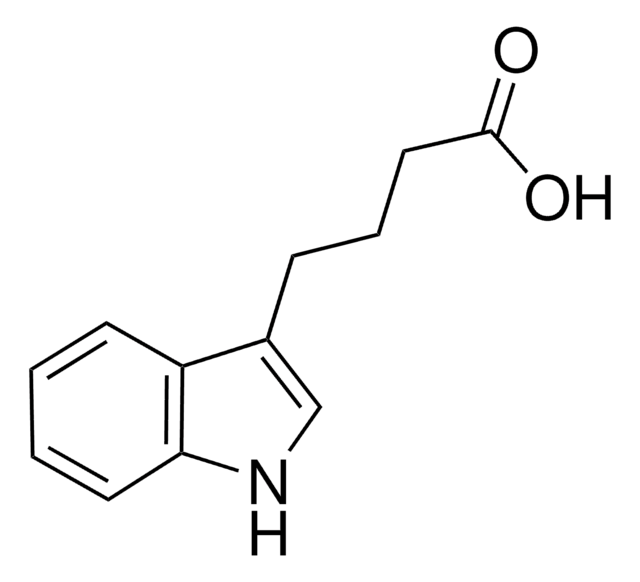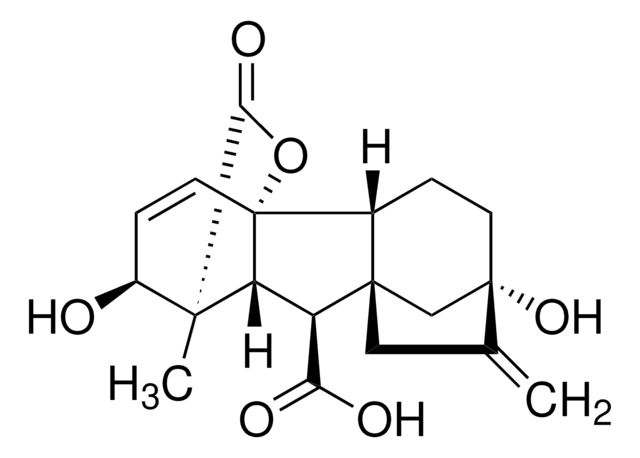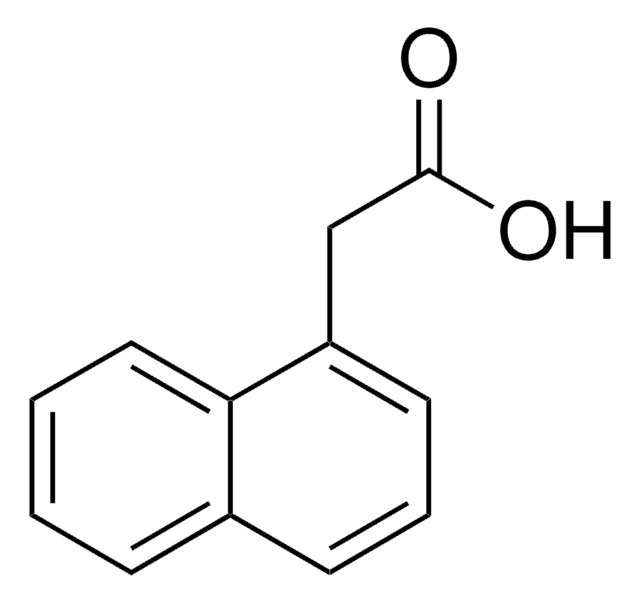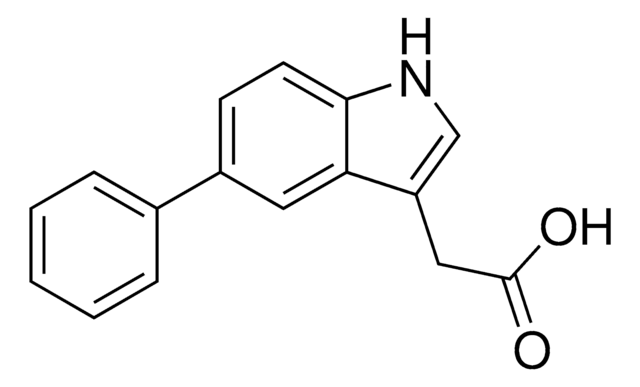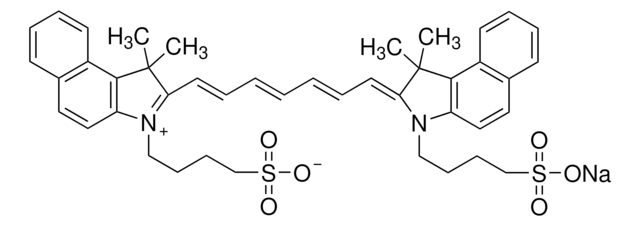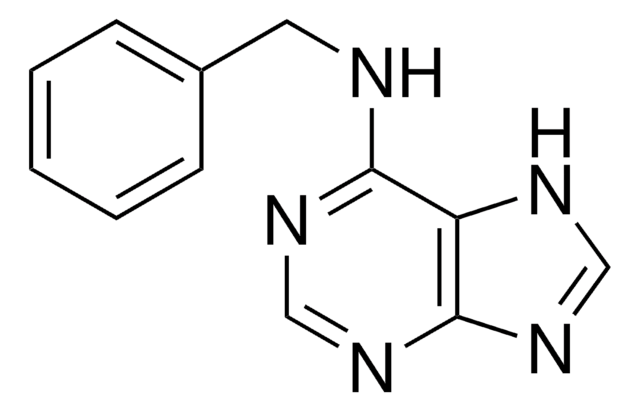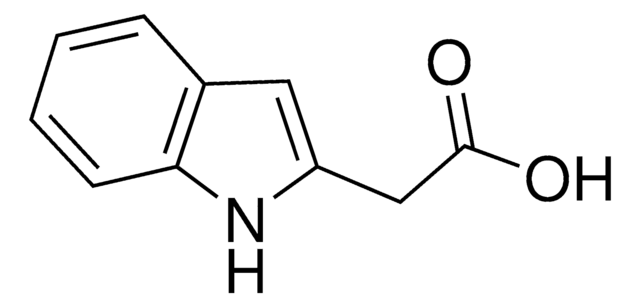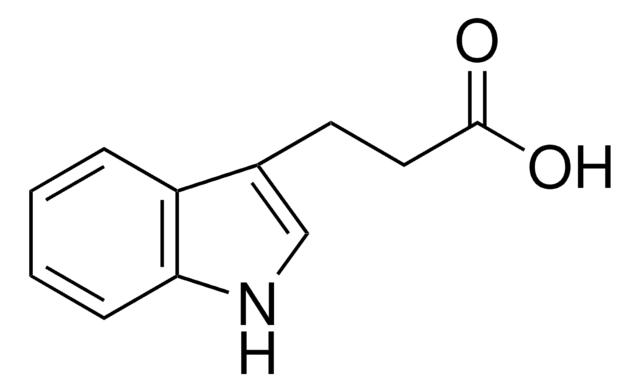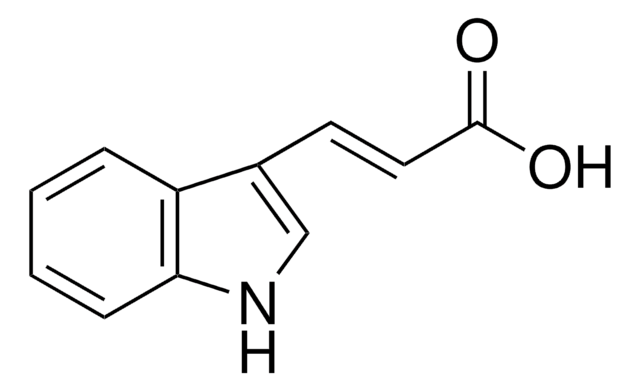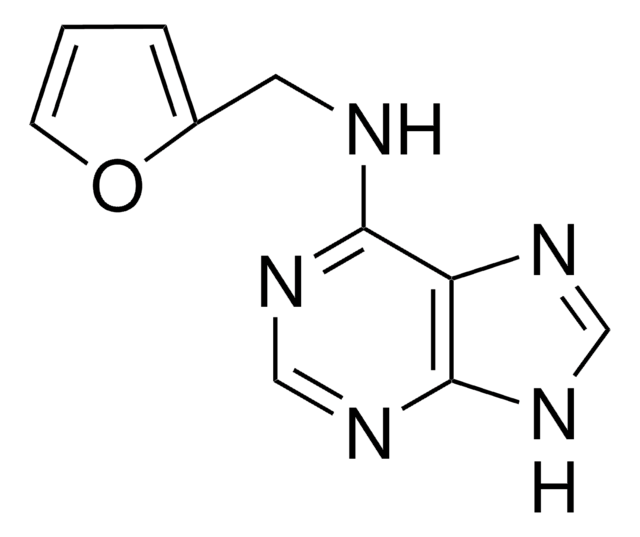I5148
Indole-3-acetic acid sodium salt
BioReagent, suitable for plant cell culture, ≥98%
Synonym(s):
3-IAA, IAA, indolylacetic acid, Heteroauxin
Sign Into View Organizational & Contract Pricing
All Photos(2)
About This Item
Empirical Formula (Hill Notation):
C10H8NNaO2
CAS Number:
Molecular Weight:
197.17
MDL number:
UNSPSC Code:
12352106
PubChem Substance ID:
NACRES:
NA.52
Recommended Products
grade
for molecular biology
product line
BioReagent
Assay
≥98%
form
powder
technique(s)
cell culture | plant: suitable
solubility
H2O: soluble
suitability
suitable for (Plant cell culture)
application(s)
agriculture
storage temp.
2-8°C
SMILES string
[Na+].[O-]C(=O)Cc1c[nH]c2ccccc12
InChI
1S/C10H9NO2.Na/c12-10(13)5-7-6-11-9-4-2-1-3-8(7)9;/h1-4,6,11H,5H2,(H,12,13);/q;+1/p-1
InChI key
YGSPWCVTJRFZEL-UHFFFAOYSA-M
General description
Indole-3-acetic acid (IAA) is a plant hormone and a natural form of phytoalexins that belongs to the class of auxins. It is synthesized by plants and plant-associated microorganisms including ectomycorrhizal, endophytic fungi, and plant growth-promoting rhizobacteria. IAA is the product of L- tryptophan metabolism.
Application
Indole-3-acetic acid (IAA) sodium salt has been used:
- to alter the root developmental processes in Arabidopsis thaliana seedlings
- as a standard for the determination of IAA by high-performance liquid chromatography using Chlorella sorokiniana and Azospirillum brasilense sample culture media
- as one of the plant hormone to treat interspecific hybrids (Elaeis oleifera Cortés x Elaeis guineensis Jacq.) and study its effect on bunch formation in parthenocarpic fruits and oil production in oil palm
- as a supplement in culture media to induce mitotic slippage in human cell lines
- as a supplement in a shoot induction medium (SIM) for shooting and shoot elongation from explant
Biochem/physiol Actions
Indole-3-acetic acid (IAA) is a plant growth regulator. Indole-3-acetic acid induces root initiation, cell division, and cell elongation which promotes plant growth. It mediates organ development, fertility, cell orientation, and elongation. Overproduction of IAA is found to trigger ethylene production and therefore inhibit plant growth. In addition, up-regulation of IAA by pathogenic bacteria causes excess cellular division leading to gall disease in the plant.
Storage Class Code
11 - Combustible Solids
WGK
WGK 3
Flash Point(F)
Not applicable
Flash Point(C)
Not applicable
Personal Protective Equipment
dust mask type N95 (US), Eyeshields, Gloves
Choose from one of the most recent versions:
Already Own This Product?
Find documentation for the products that you have recently purchased in the Document Library.
Customers Also Viewed
D Saleh et al.
Journal of applied microbiology, 127(3), 794-811 (2019-05-28)
To characterize the bacterial communities of the rhizosphere and endosphere of the forage grass timothy (Phleum pratense L.) and evaluate the functional attributes with respect to growth promotion properties, antimicrobial and biosurfactant capacities. A total of 254 culturable bacteria were
A Borah et al.
Journal of applied microbiology, 127(3), 825-844 (2019-06-20)
Tea (Camellia sinensis (L.) O. Kuntze) is an economically important caffeine-containing beverage crop with massive plantation in the Northeast corner of the agroclimatic belt of India. The main aim of the work was to isolate, identify and characterize the native
Qiliang Zhan et al.
Mikrochimica acta, 186(9), 600-600 (2019-08-05)
A hydrophilic interaction liquid chromatography (HILIC) material with application in glycoproteomics was obtained by sequential deposition of polyethyleneimine (PEI) and hyaluronic acid (HA) on a negatively charged substrate by means of electrostatic self-assembly. This kind of surface modification endows the
Potentides: New Cysteine-Rich Peptides with Unusual Disulfide Connectivity from Potentilla anserina.
Yuping Shen et al.
Chembiochem : a European journal of chemical biology, 20(15), 1995-2004 (2019-03-31)
Cysteine-rich peptides (CRPs), which are disulfide-constrained peptides with 3 to 5 disulfide bonds and molecular weights of 2 to 6 kDa, are generally hyperstable and resistant to thermal, chemical, and enzymatic degradation. Herein, the discovery and characterization of a novel suite
Yao Chen et al.
mAbs, 11(6), 1089-1100 (2019-06-04)
Although peroxide and leachable metal-induced chemical modifications are among the most important quality attributes in bioprocess development, there is no mainstream characterization method covering all common modifications theoretically possible on therapeutic proteins that also gives consistent results quickly. Here, we
Our team of scientists has experience in all areas of research including Life Science, Material Science, Chemical Synthesis, Chromatography, Analytical and many others.
Contact Technical Service
